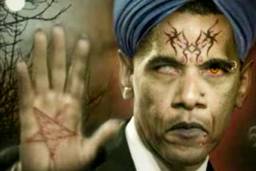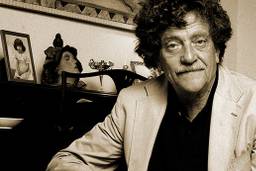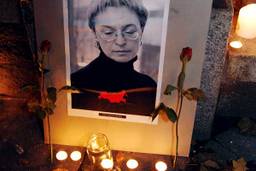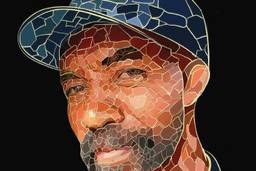The Bungled Hunt for 9/11’s Mastermind: KSM
It took Washington 10 years to capture Kahlid Sheikh Mohammed, who will soon be charged with murdering 2,976 people. A new book reveals his shadowy story.
Steve Weinberg
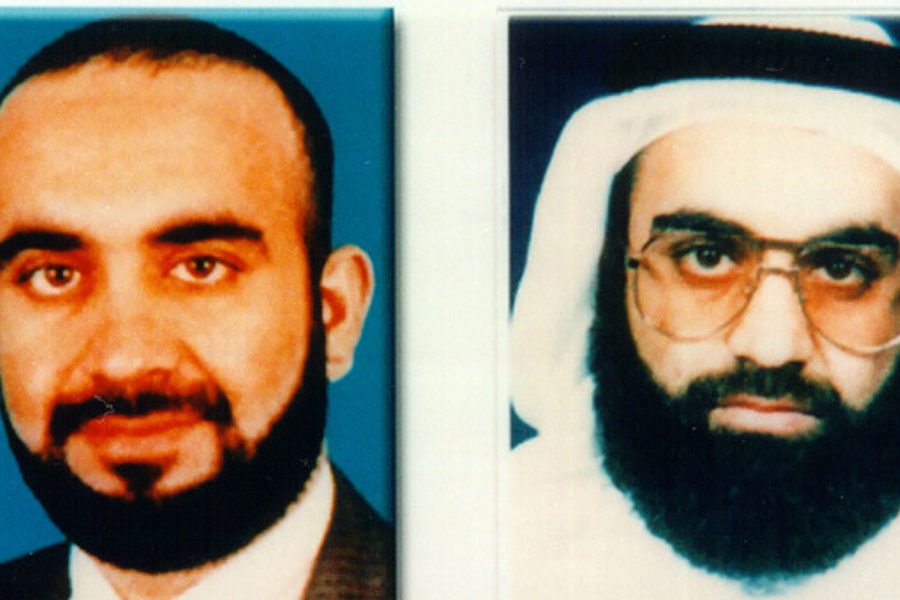
While waging the so-called war on terrorism, U.S. government agencies and the military have snatched defeat from the jaws of victory over and over. It is now well documented that bureaucratic feuding and miscommunications between the Central Intelligence Agency and the Federal Bureau of Investigation allowed aspiring suicide bombers to make discoverable, suspicious journeys into the United States. Then the bungling by supposedly sophisticated intelligence agencies with huge budgets allowed those same men to learning how to fly commercial airplanes, hijack them and crash them into the World Trade Center and the Pentagon.
After 9/11, U.S. government and military inadequacies allowed Osama bin Laden – the financier of the attack and supposedly its mastermind – to remain at large year after year through the sabre-rattling George W. Bush administration, until his inelegant death by a Navy SEAL team directed by President Barack Obama in May 2011.
Now come two persistent journalists to spread the message that the bungling reached farther and deeper than previously documented. It turns out that bin Laden was not the mastermind of 9/11 and other deadly attacks on the United States and allied nations. The actual mastermind is named Khalid Sheikh Mohammed, known primarily by his initials: KSM. It took American terrorist hunters more than a decade to chase down KSM while he continued to control death squads around the globe. But even with the capture of KSM in 2003, American interrogators failed to eliminate his influence, while simultaneously believing his lies that squandered precious resources on what can be colloquially termed a wild goose chase.
Seven years ago, Terry McDermott completed a book stunning in its degree of difficulty and its revelations. That book is Perfect Soldiers: The Hijackers – Who They Were, Why They Did It. Traveling around the world, placing his life in danger and doing his best to extract information from sources unused to inquiries from American investigative reporters, McDermott chronicled the pasts of the men who turned commercial airplanes into deadly missiles. It turns out – surprise! – that those hijackers and their mentors are flesh-and-blood humans with desires and grievances, much like anybody else. After reading McDermott’s revelations about them, it was no longer logical to think of them as demonized stereotypes who just happened to become mass murderers. McDermott does not excuse them. But he does explain them.
While working on that book, McDermott heard about KSM, a young (born in 1965) man who nonetheless seemed ghostlike. His accomplishments seemed mind-boggling. Could one person truly have engineered deadly operations around the globe, including a 1993 bombing at New York City’s World Trade Center, which caused six deaths, many injuries and structural damage? At first, his name showed up only as contributor to a bomb maker’s bank account; it turned out the bomb maker was later identified as somebody who might be Mohammed’s nephew.
Eight years later, after failing to anticipate 9/11, the crucial question became: Did KSM, a Kuwaiti citizen of Pakistani descent, play a role as significant as bin Laden in masterminding that catastrophe?
To answer it, McDermott teamed up with another former Los Angeles Times reporter, Josh Meyer. The result is The Hunt for KSM: Inside the Pursuit and Takedown of the Real 9/11 Mastermind, Khalid Sheikh Mohammed, a book with two major components: a biography of KSM, and a law enforcement/espionage narrative featuring agents from the New York Port Authority, the Federal Bureau of Investigation, U.S. Justice Department, Central Intelligence Agency and other federal agencies. The most memorable government figure of all is Frank Pellegrino, an FBI agent who tracked KSM around the globe year after year, and came to understand his role in al-Qaeda and related organizations hoping to mortally wound entire nations of perceived infidels.
Pellegrino embodies the reality that U.S. “intelligence” agencies are not always incompetent. McDermott and Meyer concede that “the American intelligence apparatus, under the right conditions…can perform stunts Hollywood would be hard pressed to imagine. It can zero in on a single man standing in front of a single cave in the farthest reach of the Hindu Kush; it can extract a conversation from the back bedroom of a fourth-floor walk-up in old, crumbling Cairo.”
But those capabilities do not always lead to success in halting terrorism, perhaps especially because agencies often are seeking different results. For example, after 9/11, the FBI hoped to capture masterminds and punish them. The CIA hoped to prevent future deaths of Americans. As McDermott and Meyer phrase it, “The FBI wanted evidence; the CIA needed intelligence.”
McDermott and Meyer followed the KSM hunters as closely as possible while conducting an independent inquiry. The journalists would learn that KSM’s central role in 9/11 had been discovered by American interrogators in a roundabout way, due to a joint American-Pakistani raid on a so-called terrorist hideout in the city of Lahore. An occupant of the hideout, Abu Zubaydah, suffered serious wounds in the raid. The CIA and FBI wanted to pump him for information quickly in case he died. He received transport to a base in northern Thailand, where a team of American medical personnel labored to keep him alive during the interrogation. The two FBI agents conducting the interrogation showed photographs of suspected terrorists to Zubaydah. When he saw a photograph of KSM, he said “That’s Mukhtar. How did you know Mukhtar was the mastermind of September 11th?”
FBI and CIA agents had heard the name “Mukhtar” previously but were uncertain about the individual’s identity. Furthermore, American intelligence agents had been operating under the assumption that KSM was not part of al-Qaeda and thus played no role in 9/11. With this new information, the manhunt changed direction.
He was difficult to pin down, perhaps in part because he understood Americans better than his hunters understood him. His understanding began with his first journey to the United States, in 1984, to attend Chowan College in Murfreesboro, N.C. After a semester there, he transferred to North Carolina Agricultural and Technical State University in Greensboro. He experienced prejudicial treatment aimed at foreign religiously observant Muslims.
KSM returned to Kuwait, embittered at the racism and debauchery he had witnessed on American college campuses. Crossing Middle Eastern and Asian borders, he raised money to fund attacks on Western nations he considered anti-Muslim. In 1994, still a year short of age 30, he relocated to Manila, capital of the Philippines, to find new targets and test various explosives until he could figure out how to effectively attack the United States.
After lots of stupid decisions and false leads, nearly 10 years later the CIA caught a break; a long-time acquaintance of KSM’s “contacted the agency out of the blue” and promised to help locate KSM in return for regular payments from the CIA. The agency decided the man, whom the authors call “Baluchi” (a made-up code name), was credible and began making payments. Baluchi did play a role in locating KSM, and a CIA team working with Pakistani troops captured KSM during March 2003 at a private home in Rawalpindi.
FBI agent Pellegrino, who perhaps knew more about KSM than any other American operative, was shut out of the interrogation. The FBI opposed using torture as part of the interrogation arsenal, according to the authors; the CIA was willing to use torture. Within the torture-approving Bush administration, the CIA prevailed.
After nine years in U.S. government captivity – the first three years at CIA secret prisons in Eastern Europe, Asia and Africa, then at the infamous Guantanamo Bay prison in Cuba – KSM remains shadowy to many otherwise informed citizens. “There is a good chance his full story will never be told in an official venue,” McDermott and Meyer believe. “For reasons that perplex even its best friends, the United States has kept Mohammed in the shadows of its secret prisons for so long it seems likely he can now never be fully exposed to the light for fear of what he might say about what went on in the darkness.”
They are alluding to the fact that the CIA, sometimes through private contractors, waterboarded KSM at least 183 times while interrogating him. The practice is widely denounced as torture. McDermott and Meyer rely partly on a credible report from the International Committee of the Red Cross regarding the interrogations of KSM and other detainees at Guantanamo.
Whatever methods have been employed to break KSM, he apparently has not broken. About the interrogations, McDermott and Meyer say “it was clear that KSM was lying, and that his interrogators were simply accepting his claims and moving on to the next question on the latest list sent to them from [CIA headquarters in] Langley.” At times, he provided information that proved to be true, but seemed to limit what he revealed to what “would not be new to his captors.” When KSM confessed to plots and attacks around the globe, “many of these were hardly fully formed. Some seemed like little more than teatime chatter. Most were aspirational.”
Government prosecutors worried about inaccurate information coming from KSM and worried about the admissibility of statements extracted through torture. So they devised a plan to allow Pellegrino and other knowledgeable operatives outside CIA control to question Guantanamo detainees without using torture. That might yield information for a trial, if indeed KSM ever would be tried. Originally charged with crimes that would be dealt with in a mostly secret U.S. military tribunal, KSM saw that proceeding (in which he pled guilty) ended by the Obama administration. In November 2009, Attorney General Eric Holder said KSM and four other alleged terrorists would be tried in civilian federal court. But a majority in Congress refused to appropriate money to transport the Guantanamo detainees to a New York court, so Holder reversed his decision.
Then, on April 4, 2012, the Pentagon charged KSM (and four others) with the murder of 2,976 people on 9/11. They face the death penalty and will be arraigned in a military court on May 5.
While trying to untangle KSM’s web of lies, partial truths and accurate statements, U.S. intelligence agents seem to agree about one conclusion: “the range of his contacts around the globe was stunning.” Throughout the torture sessions, KSM did not reveal bombings and plots his interrogators believe he knew about, including those in Madrid and London and Saudi Arabia. KSM also did not reveal the hiding places or communications methods of Osama bin Laden.
In fact, McDermott and Meyer say that even now, the legacy of 9/11 mastermind KSM continues through the deadly attacks of trainees he schooled so well and sent out into the secular world. It is a sobering conclusion.
